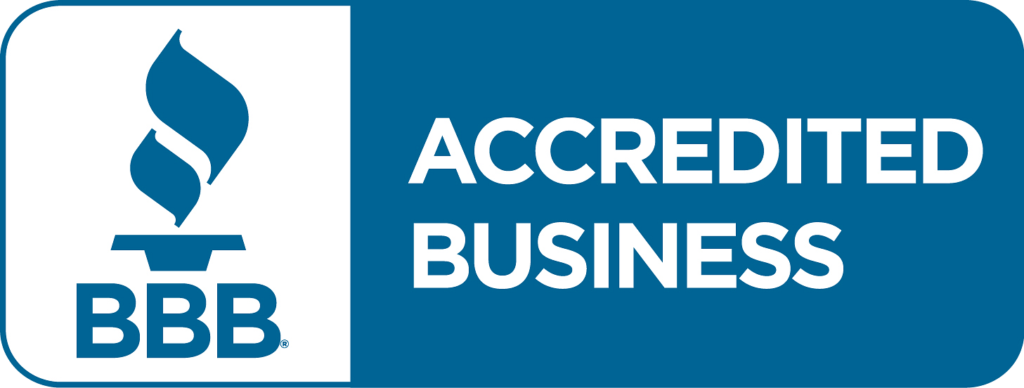Filing Utility Patent Application: An Overview
Table of Contents
ToggleFiling a utility patent application is critical for inventors seeking to protect their innovative ideas. Utility patents provide legal protection for new and useful inventions, including processes, machines, and compositions of matter. The application process, however, is complex and requires careful attention to detail, from conducting prior art searches to drafting claims that define the scope of protection sought.
For many inventors, navigating this process can be challenging without legal assistance. This is where the Affordable Patent Agency and patent attorneys come into play. These professionals help inventors avoid common pitfalls and ensure that applications meet the stringent requirements of the United States Patent and Trademark Office (USPTO).
In this comprehensive guide, we’ll explore the steps involved in preparing and filing a utility patent application, the role of patent attorneys in the process, and common mistakes to avoid. We’ll also emphasize how the Affordable Patent Agency can provide cost-effective solutions to streamline the patent filing.
Secure Your Utility Patent Today Call Affordable Patent Agency, LLC at (855) 444-1946 Today
Utility Patent Application: Steps to Prepare
The utility patent application process involves multiple stages, from drafting the initial documentation to submitting the application to the USPTO. Below is a step-by-step breakdown of the necessary actions to prepare a strong utility patent application.
- Conduct a Thorough Prior Art Search
Before filing a utility patent application, it’s essential to conduct a prior art search. This search helps identify existing inventions and patents related to your innovation. The goal is to ensure that your invention is new and not already patented or publicly disclosed. A prior art search can include:
- Patent databases: Search through national and international patent records.
- Scientific publications: Review academic papers and technical journals.
- Industry literature: Explore trade publications, product catalogs, and technical white papers.
Conducting a comprehensive prior art search reduces the risk of your patent application being rejected due to the existence of similar inventions. Affordable Patent Agency often provides this service at a fraction of the cost charged by traditional law firms, making it accessible to individual inventors and startups.
- Draft a Detailed Description of the Invention
The heart of a utility patent application is the description of the invention, which must be clear, detailed, and sufficient to allow someone skilled in the field to reproduce the invention. The description should include:
- Background and problem solved: Explain the problem your invention addresses and how it improves upon prior solutions.
- Technical details: Provide a thorough explanation of how the invention works, including any specific materials, components, or processes used.
- Figures and drawings: Illustrate the invention with diagrams, sketches, or photographs to support the written description.
When drafting the description, avoiding leaving out any key details is essential. Omissions can weaken your patent’s enforceability or lead to rejection. For inventors seeking assistance, Affordable Patent Agency can help ensure that the description is complete and compliant with USPTO standards.
- Write Clear and Comprehensive Claims
Claims are the most critical part of a utility patent application, as they define the legal scope of protection for your invention. Claims must be carefully written to cover the invention’s essential features while distinguishing it from prior art. There are two types of claims:
- Independent claims: Broad claims that stand on their own and cover the essential features of the invention.
- Dependent claims: Narrower claims that refer to and add limitations to an independent claim.
Drafting claims requires a deep understanding of patent law, as overly broad or poorly written claims can lead to rejection or difficulty enforcing the patent later on. This is where patent attorneys or agents play a crucial role. They have the expertise to craft strong claims that provide maximum protection without overstepping prior art.
- Include an Abstract and Summary
A utility patent application must include an abstract and an invention summary. The abstract is a brief overview (150 words or less) that describes the invention’s key features. It is primarily used for quick reference by the USPTO and the public. The summary, on the other hand, provides a more detailed synopsis of the invention’s technical background and purpose.
Although these sections are relatively brief, they must be carefully worded to reflect the invention’s scope accurately. Mistakes in the abstract or summary can lead to confusion and may cause delays in the application process.
- Prepare Formal Drawings
If applicable, you’ll need to submit formal drawings to accompany the written description of your invention. These drawings should visually represent key components or processes involved in the invention. While informal sketches can be included during the early stages of drafting, formal patent drawings must adhere to specific USPTO guidelines regarding format and labeling.
- File the Utility Patent Application
Once all the documentation is complete, the final step is to file the utility patent application with the USPTO. This can be done electronically through the USPTO’s Patent Electronic Filing System (EFS-Web). When filing, you’ll need to pay the associated filing fees, which vary based on the size of your entity (individual, small business, or large corporation).
In addition to filing fees, you may also need to pay for optional services, such as expedited examination. Due to the complex nature of the process, filing a patent application without assistance can be risky. Working with an affordable patent agency can ensure your application is filed correctly, reducing the risk of delays or rejections.

Filing Utility Patent Application: Role of Patent Attorneys and Patent Agents
Patent attorneys and patent agents are pivotal in helping inventors navigate the utility patent application process. While inventors can file applications on their own (referred to as pro se filing), doing so can be risky due to the highly technical nature of patent law.
- Legal Expertise in Patent Law
Patent attorneys are licensed professionals with a deep understanding of technical and patent law fields. Their role is to help inventors draft, file, and prosecute patent applications in a way that maximizes the chances of approval. Here’s how they assist during the process:
- Conducting prior art searches: Ensuring the invention is novel and identifying potential conflicts with existing patents.
- Drafting strong claims: Writing claims that protect the invention while complying with legal standards.
- Communicating with the USPTO: Responding to office actions or rejections and negotiating with USPTO examiners to secure patent approval.
- Enhancing Chances of Approval
The patent approval process often involves office actions issued by the USPTO, which may raise objections or rejections based on prior art, claim wording, or other issues. Patent attorneys are skilled at addressing these objections and working with the USPTO to clarify or amend the application as needed.
- Cost-Effective Alternatives: Affordable Patent Agency
While patent attorneys provide invaluable expertise, traditional law firms can be expensive, especially for solo inventors or small startups. This is where the Affordable Patent Agency comes in. The agency offers the same professional services at a fraction of the cost. With fixed-fee structures and streamlined processes, the Affordable Patent Agency makes it easier for inventors to file utility patent applications without sacrificing quality.
By working with an affordable patent agency, inventors can still benefit from expert assistance without the financial burden of hourly attorney fees.

Filing Utility Patent Application: Common Mistakes
Filing a utility patent application involves numerous potential pitfalls. Even minor errors can lead to rejections, delays, or weakened patent protection. Below are some of the most common mistakes made by inventors during the application process, along with tips on how to avoid them.
- Inadequate Prior Art Search
Failing to conduct a thorough prior art search is one of the most common mistakes inventors make. Without a comprehensive search, you risk filing an application for an invention that is not novel, resulting in rejection by the USPTO. To avoid this mistake, work with professionals—either a patent attorney or the Affordable Patent Agency—who can conduct an exhaustive prior art search on your behalf.
- Poorly Written Claims
The strength of a utility patent lies in its claims. Claims that are too broad may overlap with existing patents and be rejected, while claims that are too narrow may fail to provide adequate protection for the invention. Writing strong, well-balanced claims is a skill that requires experience in patent law, so it’s best to consult a patent professional to help you draft them.
- Lack of Detail in the Description
The description section of a utility patent application must be detailed enough for someone skilled in the field to reproduce the invention. Providing vague or incomplete descriptions can lead to rejection or a weakened patent. Be sure to include all technical details, materials used, and variations of the invention in your application.
- Failing to Respond to Office Actions
During the examination process, the USPTO may issue office actions requiring clarification or amendments to your application. Failure to respond to these actions within the specified time frame can result in abandonment of your application. Working with an experienced patent attorney or agency ensures that you stay on top of deadlines and promptly address any issues the USPTO raises.
- Mismanagement of Costs
Filing a utility patent can be expensive, especially when factoring in attorney fees, filing fees, and potential office action responses. Many inventors underestimate the total cost and fail to budget accordingly. By working with an affordable patent agency, you can better manage costs through fixed-fee services, ensuring you don’t run into financial hurdles during the process.
Frequently Asked Questions
Question: What is a utility patent?
Answer: A utility patent protects new and useful inventions, including processes, machines, articles of manufacture, or compositions of matter. It provides the right to exclude others from making, using, or selling the invention for up to 20 years from the filing date.
Question: What are the basic requirements for obtaining a utility patent?
Answer: To obtain a utility patent, an invention must be novel, non-obvious, and useful. The application must include a detailed written description, drawings (if necessary), and clearly defined claims that specify the scope of protection.
Question: What happens if my utility patent application is rejected?
Answer: If your utility patent application is rejected, you will receive an Office Action explaining the reasons. You may respond by amending claims, providing additional arguments, or addressing prior art concerns. Patent professionals can assist in crafting effective responses to overcome rejections.
Successful Patents in Dallas, Texas
Affordable Patent Agency Simplify the Utility Patent Process
Filing a utility patent application is a complex process that requires careful planning, drafting, and legal expertise. Every step, from conducting prior art searches to writing detailed claims, must be handled precisely to ensure a successful application.
Fortunately, the Affordable Patent Agency provides a cost-effective alternative, offering the same professional guidance at a fraction of the cost. They help inventors prepare and file utility patent applications without the financial burden of traditional law firms.
For inventors seeking to protect their innovations, the Affordable Patent Agency offers the expertise and support needed to navigate the patent process successfully. By choosing the Affordable Patent Agency, you can focus on bringing your invention to market while ensuring your intellectual property is fully protected.
Affordable Patent Agency, LLC
4131 N. Central Expressway Suite 900, Dallas, TX 75204
(855) 444-1946




